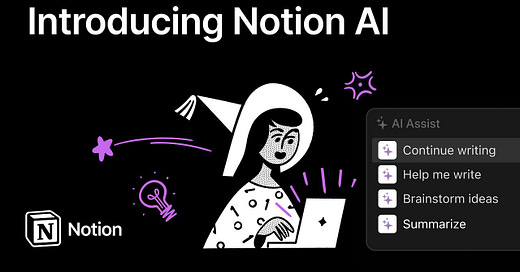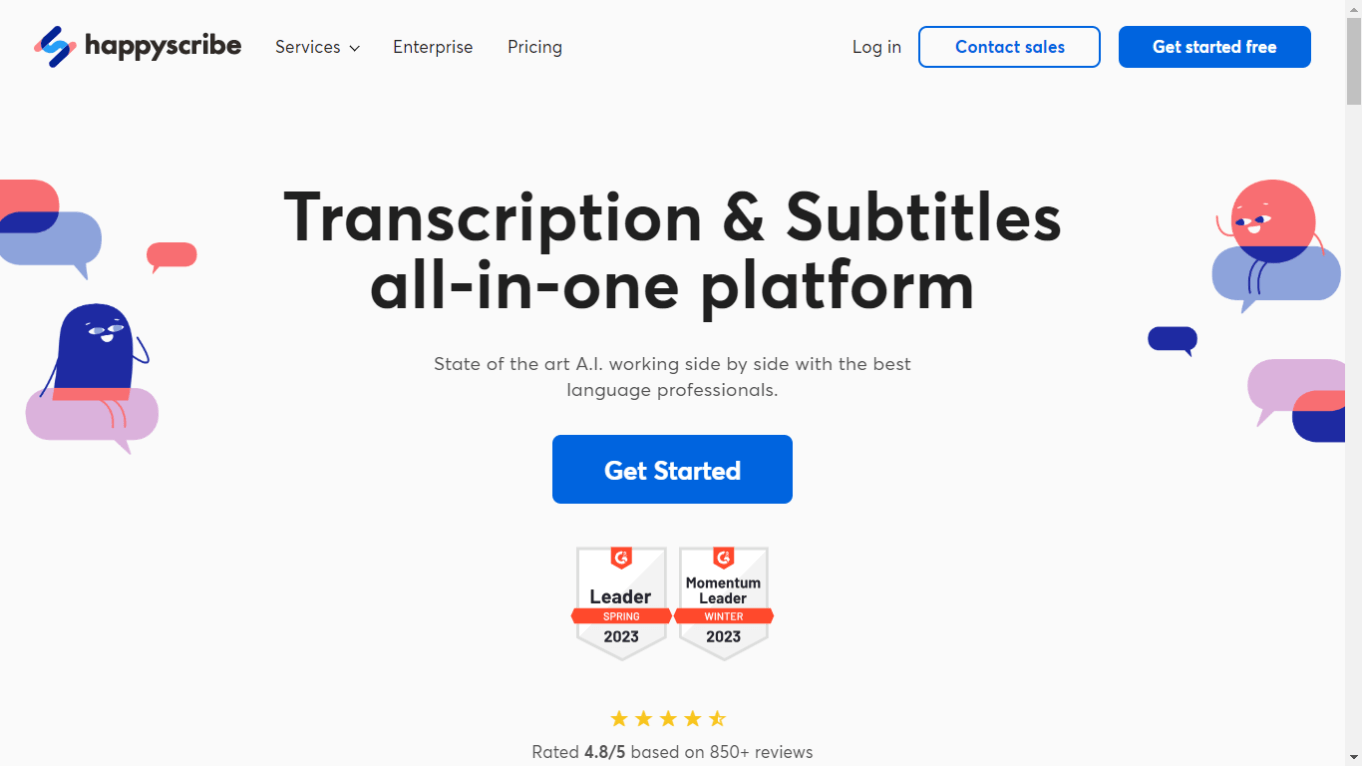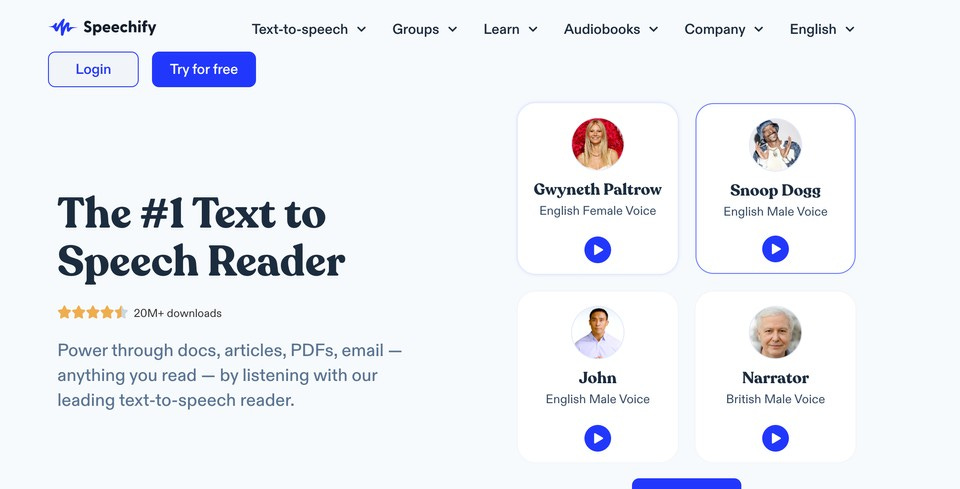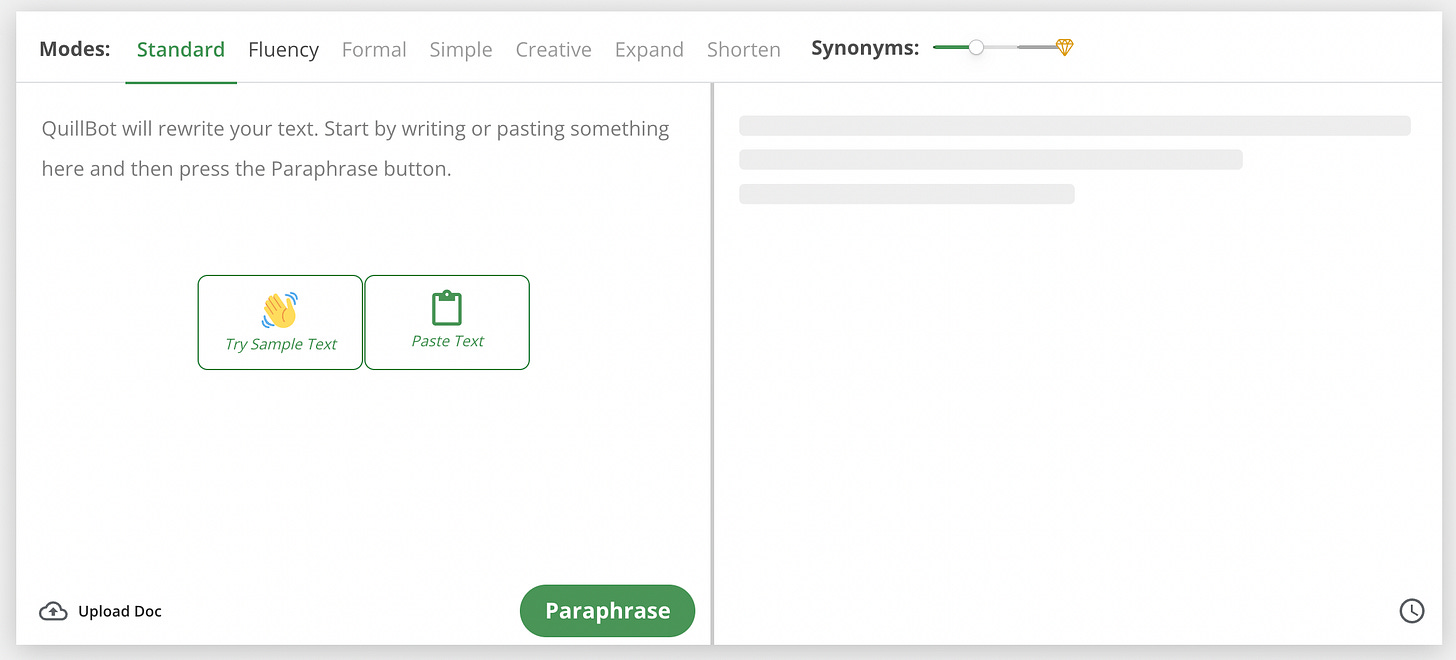📈 Efficiency vs Ethics of AI in Education
Explore ways in which students and educators are leveraging AI to enhance their efficiency, while also navigating the potential implications of dependence on these tools
As educators explore implementing AI tools, it will be important to carefully assess the ability of these tools to streamline processes through automated grading, personalized instruction, and other data-driven applications while weighing their potential drawbacks and ethical implications. At the same time, students also need to evaluate whether utilizing AI tools is truly furthering their learning or merely completing assignments without genuine comprehension. Striking the right balance between leveraging AI for efficiency and ensuring authentic learning experiences is pivotal in navigating the evolving landscape of education. How have AI tools been most helpful to you as an educator?
Here is an overview of today’s newsletter:
Recap from Stanford University’s second AI + Education Summit
Popular AI Tools used by students to boost their efficiency
ChatGPT “Priming” method that helps students stay on top of coursework
Texas standardized test essays now automatically being scored by computers
🚀 Practical AI Usage and Policies
Stanford University recently held its second AI + Education Summit at the beginning of this month, featuring AI scholars, educators, school administrators, and Ed Tech leaders. Throughout this event, they highlighted some of the latest advances in AI technologies for students and educators, offering insights on the future of teaching strategies, student assessment, and ethical issues of AI.
Here is a playlist of videos taken from the Summit, including Fireside Chats with Sal Khan, Chris Piech, and many other speakers. A helpful toolkit they shared at the event was CRAFT (Classroom-Reading Resources about AI For Teaching), “a collection of co-designed free AI Literacy resources about AI for high school teachers, to help students explore, understand, question, and critique AI…it pursues a multidisciplinary approach so educators with a variety of discipline background can teach about AI”. This resource may be helpful for educators looking to incorporate AI Literacy curriculum within the classroom.
A major topic discussed at the event—and one that continues to garner importance—is the ability of AI to increase our efficiency, but at what cost? Assessing the full implications of implementing AI tools in education will be an ongoing process, especially as this technology advances.
In terms of efficiency, AI Tools like Magicschool.ai, Diffit, and Almanack.ai have risen in popularity among schools and educators, serving to reduce hours spent creating classroom resources like lesson plans, quizzes, and more. These tools have the potential to increase educators’ efficiency in doing mundane tasks and free up their bandwidth to develop more personal student-teacher connections.
While these AI tools provide valuable assistance to educators, it is also important to consider how students themselves are utilizing these technologies. To provide additional perspective, we spoke with Yash Yardi, a high school student at the Illinois Mathematics and Science Academy, regarding the AI-powered tools students are finding most helpful to increase their efficiency in learning and studying. Below are some insights into the top-rated AI applications students are integrating into their academic workflows and routines:
The Note-taking Assistant:
Notion AI (G2 4.5/5 Rating) (35 Million Users)
Notion AI integrates a handy ChatBot, creates tables, schedules, translates, and edits entire Notion projects. This is incredibly useful for teams of students working on projects, or individually for scheduling purposes, as it can create progress reports, summaries, and action items based on the information jotted in Notion workspaces.
Happy Scribe (G2 4.8/5 Rating) (100,000 Users)
Happy Scribe is a transcribing AI that has picked up steam from its free and accurate services. The tool is effective for students as it allows the transcription of lectures, videos, or audio files; a stronger, more detailed, and faster alternative to traditional note-taking styles. It also lets users download and add subtitles to their transcriptions, making it easy to share and follow along with videos, especially in different languages.
Speechify (G2 4.5/5 Rating) (20 million Users)
Speechify has two main purposes: it is proficient at reading aloud text and provides users with an AI dialect. This tool is great for students who prefer the experience of reading aloud and functions with any document file. It also allows users to have voiceovers on their text, a perk that may not be as applicable to students but is always useful for hearing back their work such as essays during the drafting process.
The Image Generator:
DALLE-3 (3.8/5) (1.5 Million)
Accessible in ChatGPT, DALLE-3’s exceptional attention to detail with prompts is signified with help from the powerful LLM. Along with its creativity, accuracy, and artistic capability, it also accepts feedback, allowing the user to tweak generated images as well. Since this tool is only available with ChatGPT-Plus, many students are subscribed to the Plus version to access both the better model GPT4 and DALLE-3 for their work.
Craiyon (4.6/5) (Unknown # of Users)
Craiyon is a free yet dynamic tool for image generation used for the same cases as DALLE-3. While it may not accurately depict a paragraph-long prompt, Craiyon is one of the easiest free tools to use. With three primary modes (art, photo, and drawing), it is capable of tackling the everyday artwork in a student’s life.
The Writing Editor:
QuillBot (TrustPilot 4.9/5 Rating) (150 Million Users)
For students, this is one of the most commonly used AI for essay writing. This is because QuillBot is not a chatbot, but rather an editor, which when given writing (up to 150 words at a time for a free version), is a strong way for students to make their works more concise, clear, and readable.
The Language Tutor:
Flint (N/A Rating) (Unknown Number of Schools)
Notably, at IMSA, Flint is being used for Spanish III and is seeing positive results. The tool has many features, but notably, it has a training session where it completes a full conversation about nearly any topic with a student and then evaluates their performance. We are excited to see tools like this which are designed to improve the learning experience as opposed to simply answering their questions.
DeepL Translate (G2 4.6/5 Rating) (> 1 billion)
DeepL is one of the newest but most powerful translators in the world. With the ability to write accurately in different languages, translate from pdfs, and unlimited AI translation with DeepL Pro, students have leveraged this over Google Translate or other popular tools significantly.
📣 Student Voices and Use Cases
This week, we had a chance to speak with Sami Melhem, a sophomore at Texas A&M University studying Computer Science. In the following, we present select highlights from these conversations, which have been slightly edited for enhanced clarity and precision:
Q: In what ways have you used AI tools for your studies?
For my hardware course, I have been using AI to “prime” for my classes. Priming is when you prepare 3 to 4 weeks of content in advance of when they teach it at school. I’ll typically take 2 to 3 hours on a Sunday to learn the content prior to learning it in my classes so that I’m not just relearning, but the information is being reiterated to me when we actually start learning it in the classroom. This helps me to stay ahead in school and makes school a lot easier for me.
Q: What does your “priming” method look like?
I use ChatGPT 4.0 and treat each chat as an agent for each of my classes, and the agent acts as a professor for the class. I initially give it all the resources that it needs like the syllabus, textbook, and course description. Afterwards, I organize the whole class into three to four weeks of content for each priming session. Then I have ChatGPT start teaching me those concepts. Initially, it will create a diagram for me and connect the concepts together. This way, not only does it allow me to understand certain concepts, but also how they connect to each other which is really important when you want to understand things at a deeper level. I can also ask the ChatGPT agent questions, and it will go into detail. In addition to the diagrams, ChatGPT will also generate images to help teach the concepts.
Q: What do you think are the most exciting possibilities for AI in transforming the future of education?
I think that the rise of AI may affect the way we approach public education. In 10 to 15 years, online education may take over as the main platform for learning. I think it might make sense for students to attend public or private school up to elementary or middle school, but from there students can specialize in topics they want to further pursue through online education. I also think that with AI, we can reconsider our approach to assessments. Rather than solely having tests and quizzes, I’ve seen my teachers use a mix of knowledge assessments and skills assessments that I found more effective. Knowledge assessments are the typical quizzes that test students’ knowledge of the concepts. Skill assessments are more project-based, and encourage you to apply what you learned and build something out of it. As AI plays a larger role in our society, we will still need that foundational knowledge of these topics but it also allows us to be more creative.
Q: What advice would you offer educators who are interested in implementing AI in the classroom?
I think that it’s important for educators to teach students how to effectively use AI for their specific courses. They can dedicate at least one lecture to show students how to prompt ChatGPT to teach them a topic in more detail and use it a learning tool for the course. Educators can also provide resources to help students become more informed about AI tool usage. I’ve noticed that a lot of students don’t really know how to prompt ChatGPT to get the most out of it. There’s a learning curve to getting it just right, and educators can help students navigate through this process, maybe even sharing prompts that they found most effective.
📝 Latest Research in AI + Education
Stanford University
GPTeach: Interactive TA Training with GPT-based Students ↗️
GPTeach introduces an innovative approach to teacher training by utilizing GPT-simulated students, offering a scalable, interactive solution to the challenges of preparing novice teachers. By simulating 1-on-1 and group interactions with students, GPTeach provides a safe, pressure-free environment for teachers-in-training to practice and refine their teaching techniques, tailored to diverse student personas and learning goals. The tool was evaluated through a think-aloud study and an A/B test, revealing its effectiveness in enhancing teaching pedagogy, course content familiarity, and pedagogical confidence.
Participants appreciated the opportunity for iterative practice and the realistic conversational structure of the sessions. GPTeach's deployment in the teacher training component of an online course demonstrated its potential to significantly improve the preparation of novice teachers. This tool represents a promising direction for the future of teacher training, leveraging the capabilities of GPT models to create a more engaging, efficient, and scalable training experience.
Julia M. Markel, Steven G. Opferman, James A. Landay, and Chris Piech. 2023.GPTeach: Interactive TA Training with GPT-based Students. In Proceedings of the Tenth ACM Conference on Learning @ Scale (L@S ’23), July 20–22, 2023, Copenhagen, Denmark. ACM, New York, NY, USA, 11 pages. https://doi.org/10.1145/3573051.3593393The University of Hong Kong
Students’ Voices on Generative AI: Perceptions, Benefits, and Challenges in Higher Education↗️
This research delves into university students' perceptions of generative AI (GenAI) technologies like ChatGPT within higher education. Surveying 399 students across various disciplines in Hong Kong, the study finds a generally positive outlook towards GenAI's role in education, highlighting its potential for personalized learning, assistance in writing and brainstorming, and aiding in research and analysis. Despite recognizing these benefits, students also express concerns regarding GenAI's accuracy, privacy, ethical implications, and its impact on personal and professional development. The study emphasizes the importance of aligning GenAI integration with students' needs and concerns to foster effective learning outcomes, suggesting that understanding and addressing these perceptions could guide educators and policymakers in crafting policies for responsible and beneficial GenAI use in academia.
Furthermore, the research suggests a series of implications for successfully incorporating GenAI into higher education. It calls for educational initiatives to enhance students' understanding of GenAI, including its ethical and societal impacts, and for the development of GenAI technologies that prioritize transparency, accuracy, and privacy. The study advocates for a reevaluation of educational policies, curricula, and teaching methods to prepare students for an AI-driven future, emphasizing the need for interdisciplinary learning, critical thinking, creativity, digital literacy, and AI ethics education. This comprehensive approach aims to leverage GenAI's potential to enrich teaching and learning experiences while preparing students for the challenges and opportunities of the AI era.
Chan, C. K. Y., & Hu, W. (2023). Students' Voices on Generative AI: Perceptions, Benefits, and Challenges in Higher Education. arXiv preprint arXiv:2305.00290.📰 In the News
Dallas Morning News
Computers scoring Texas students’ STAAR essay answers, state officials say ↗️
Key takeaways:
The Texas Education Agency has implemented an "automated scoring engine" to evaluate written responses on the STAAR (State of Texas Assessments of Academic Readiness) test, with the majority of essays now scored by computers rather than humans.
The automated system is designed to emulate human scoring by analyzing thousands of previously human-scored responses. It operates under strict human oversight, with approximately 25% of responses validated by human scorers to ensure accuracy and fairness, especially for borderline cases.
There has been confusion and concern among educators and education leaders about the transparency of this change and its potential impact on student assessment, highlighting a need for more information and clarity on the system's creation and potential biases.
The initiative is part of a broader STAAR redesign to include essays at every grade level, motivated by the need for efficiency due to increased scoring demands.
Critics argue that automated scoring could encourage teaching to the test in a way that prioritizes form over substance, potentially degrading writing quality by incentivizing students to write for machines rather than humans.
The adoption of automated scoring for standardized testing like the STAAR exam reflects a significant shift in educational assessment practices, driven by the need for efficiency and scalability. Ensuring that automated systems fairly and accurately evaluate student work without compromising educational values will be a crucial challenge moving forward.
The New York Times
When Your Technical Skills Are Eclipsed, Your Humanity Will Matter More Than Ever ↗️
Key takeaways:
As we transition into an era where AI can replicate many technical skills, the enduring importance of human-centric skills like communication, empathy, and critical thinking is emphasized.
Despite the historical emphasis on technical skills for job competitiveness, the rapid development of generative AI technologies, capable of tasks such as writing, programming, and translation, signals a shift towards roles that prioritize human interaction and creativity over technical proficiency alone.
Colleges, universities, and other educational institutions are encouraged to recalibrate their curriculums to place greater emphasis on people skills and humanities, alongside science and engineering. This adjustment acknowledges the changing landscape of the job market, where interpersonal skills and the ability to engage with AI collaboratively are increasingly valued.
Employers are also recognized as key educators in this new economy - companies like Walmart and American Airlines are noted for their efforts to integrate AI in ways that enable employees to focus more on customer engagement.
The shift towards a "relationship economy" underscores the potential for a work environment that values human qualities and achievements across various sectors, including healthcare, transportation, and education.
“Chatgpt.” ChatGPT, OpenAI (GPT-4), openai.com/chatgpt. Accessed 19 Feb. 2024. And that’s a wrap for this week’s newsletter! Based on the results from our previous newsletter poll, we have noticed an increase in the percentage of educators allowing students to utilize AI tools in the classrooms today compared to our results several months ago. Feel free to share how you have been having your students use AI within the classroom in the comment section below!
If you enjoyed our newsletter and found it helpful, please consider sharing this free resource with your colleagues, educators, administrators, and more.















Using AI to develop lessons has allowed me to expand the breadth of the topics presented in each session. I have multiple perspectives, examples, and source materials at my fingertips that make the course content more engaging and accessible to diverse learners. Additionally, in-classroom access to AI resources allows for seamless pivoting to any topic that students sink their teeth into.
We just launched an online community focused on marketing and education empowered by AI at https://marketingeducation.ai
Please join us!